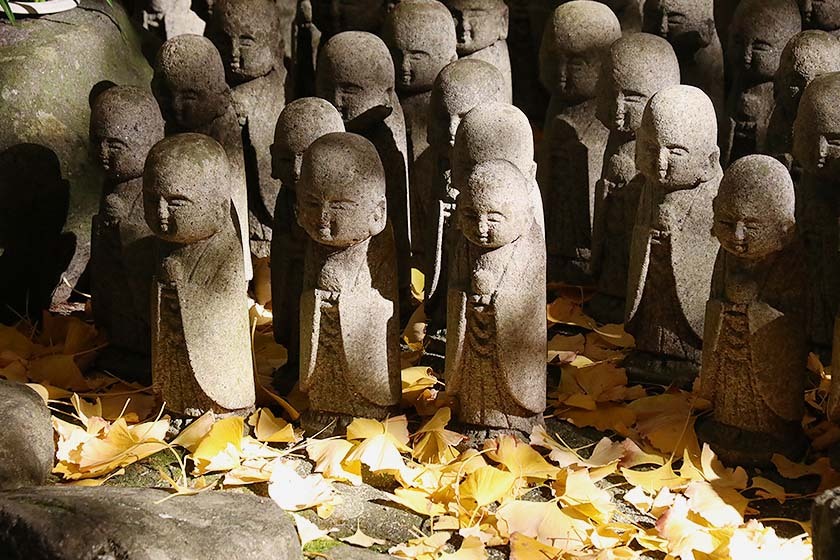Kamakura: Peak Colors

After last week's Tokyo report, today I visited some spots in Kamakura to see how the autumn colors are coming along.
Many of the popular autumn spots in Kamakura seem to be right at their peak, with the maples creating some vibrant pops of color, and the yellow ginkgos mostly reaching the end of their peak.
Particularly with the weather set to be fairly consistently sunny and warm for the next week, I predict that the maples will still be vibrant for the next two weeks. However, I predict that in many places the ginkgos will reach the end of their peak by the end of this week.
Great Buddha
My first stop today was to Kamakura's iconic Great Buddha, or Daibutsu. The Daibutsu is one of Japan's tallest Buddha statues, sitting at 11.3 meters tall, and was originally cast in 1252.
Around the grounds, there were a few Japanese maples in front of the Daibutsu that were in full color, and can be used to get some artful shots. In the small gardens around the Daibutsu there were maples in a variety of colors, as well as some bright and fluffy ginkgos. Some of the ginkgo trees were on their way out.






Hasedera Temple
Next, just a 5-minute walk from the Daibutsu, I visited Hasedera Temple. It is said that the temple was established in 736 AD to enshrine two special Kannon statues made from a sacred tree. The temple complex is on a hill with paths surrounded by maple trees that make for some colorful walks.
The maples were showing a lovely array of colors from green to red on my visit, and I spotted a few ginkgo here and there, too. One or two of the maples exposed to a lot of sun were already reaching the end of their peak. The temple is also doing a light-up event until December 8, which is nightly from sunset until closing (19:30; last entry 19:00).





Engakuji Temple
Then I got on the train to Kita-Kamakura, just three minutes on the train from Kamakura Station, to visit Engakuji Temple. The temple was founded in the year 1282, and features a number of buildings including the Sanmon main gate and the temple's main hall, the Butsuden.
When I arrived, I was greeted by a beautiful array of greens, yellows, and reds at the temple steps. Once I entered inside, it was surprisingly green around the Sanmon, but as I walked further up I spotted lots of beautiful autumn scenes. Many of them are right at their peak colors now.






Meigetsuin Temple
My final stop for the day was Meigetsuin Temple. It has the nickname Hydrangea Temple, but even outside of the summer hydrangea season, the temple is beautiful in autumn, too.
There are some maples dotted around the entrance and throughout the grounds, but the main splash of color is in the inner garden. The inner garden is only open to visitors twice throughout the year; once in June when the irises are in bloom, and once during the autumn season in November and December (500 yen to enter). A famous scene from the grounds can be taken from the main hall (Hojo), where a beautiful circular window allows a peek into the inner garden.






Questions? Ask in our forum.





